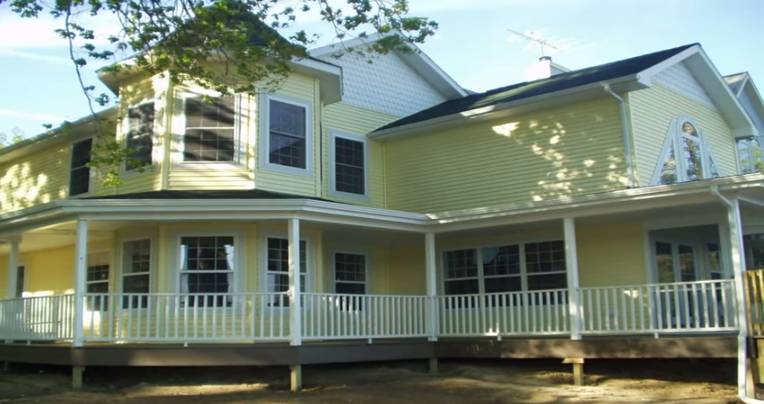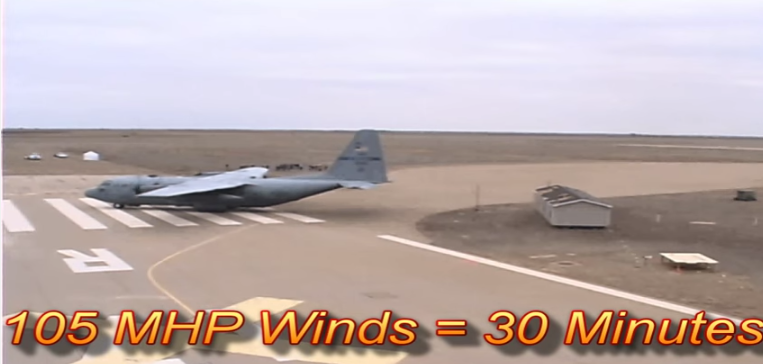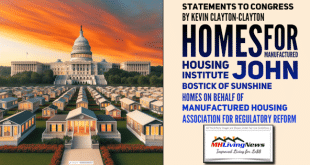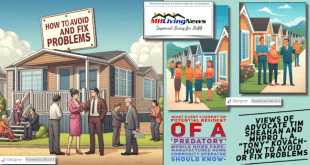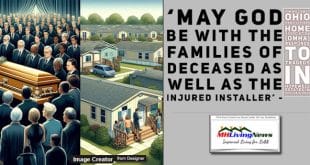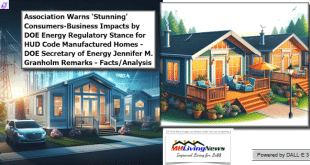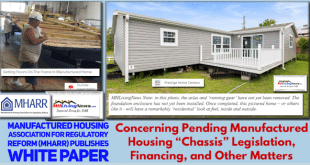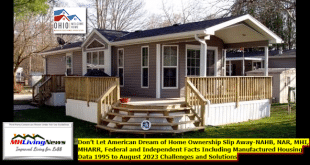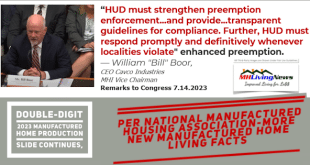ManufacturedHomeLivingNews has been told by informed sources that the NBC “Today Show” will air a special feature on a wind tests involving modern manufactured homes, which were conducted by the Insurance Institute for Business & Home Safety (IBHS).
Image credit, IBHS
The Manufactured Housing Institute was invited to be on hand for the test, but they stated they had no direct say in the test itself. An installation expert was also invited to be on hand.
A source at the scene told MHLivingNews off the record that: “Test over and the home performed beyond expectations.”
Here are experts from comments from MHI’s President, Richard “Dick” Jennison. Please note that the time zone below is Eastern time.

“The test was conducted in several phases. Prior to today’s events, the Insurance Institute for Business & Home Safety (IBHS) tested attached structures on a HUD-Code Zone III home – first on a standard carport installed using “conventional installation procedures” and then using numerous procedures designed to fortify the carport. Once the attached structure testing was complete, they opened a window and a door on the home’s windward side “to evaluate performance of a Zone III manufactured home during a high wind event.”
“Regarding this previous portion of the test, IBHS indicated: “When one of these high wind-rated HUD-Code homes is installed on a permanent foundation, in most of the country, it would end up resisting wind storms better than surrounding site-built homes.”
“Today’s test repeated the same conditions on a HUD-Code Zone I home. The only real dramatic footage of the test occurred when the non-fortified carport blew off the home and caused substantial damage to the roof of the home. When the house was turned, the fortified carport (and the home itself) performed exceptionally well in sustained winds exceeding 90 mph. Finally, they opened the side door and a window and kept increasing the wind speed. After the home took sustained winds for over ten minutes, the roof finally blew off at 100 mph.
“It should be noted that IBHS’s stated test objective was broader than simply developing mitigation measures for strengthening carports and attached structures. According to the test material: “A secondary objective was to demonstrate the superior performance of manufactured homes built to HUD- Code Zone III standards.” Yet following the test, the director of the IBHS told the crowd how impressed she was at the performance of the Zone I home itself.
The still/graphic above is from the video on the page linked below.
It is from an earlier wind test, not the one that NBC News will feature.
“It is hard to tell how NBC will report the test tomorrow, but nearly everyone from the industry at the facility was excited at how well the home performed under conditions exceeding its design considerations. In the IBHS test of site-built homes, the non-fortified home was completely destroyed at 96 mph.”
Additional points shared by MHI’s Jennison included:
– HUD wind zones were developed for a reason. While higher zone homes may provide additional protection from wind, this test proved that homes are constructed appropriately for the wind zones for which they were built.
– In a similar test IBHS conducted on traditional site-built homes, the lower wind standard home was completely obliterated at the same wind speed. The HUD Code Zone I performed much better than the unfortified site-built home.
– The damage done to the HUD-Code Zone I home was sustained largely due to the failure of the attached structure. MHI and its member companies strongly encourage strict compliance with local and state building codes that better account for local conditions.
The report clearly supports what a video we posted over a year ago stated, namely that modern manufactured homes perform as well or better than their conventional housing counterparts. On the page linked below, two videos are posted. One of a conventional house that is destroyed in well under 30 seconds by a tornado, caught live by a bank’s video camera. The other video is of a manufactured home that survived a tornado and then survived a different (previous) wind test.
No one is saying that modern manufactured homes are “tornado proof,” but they are more resistant to tornadoes and high winds than is widely thought to be the case. Common sense supports this fact, because a manufactured home is designed to be moved at highway speeds and may encounter head-winds of 20 to 25 miles per hour in addition to the wind-resistance caused during transport. By contrast, conventional housing does not have to meet such a standard.
IBHS has agreed to a follow up interview with MHLivingNews to gain additional details about this wind test. Watch for it in the days ahead. ##
 manufacturedhomelivingnews.com Manufactured Home Living News
manufacturedhomelivingnews.com Manufactured Home Living News

